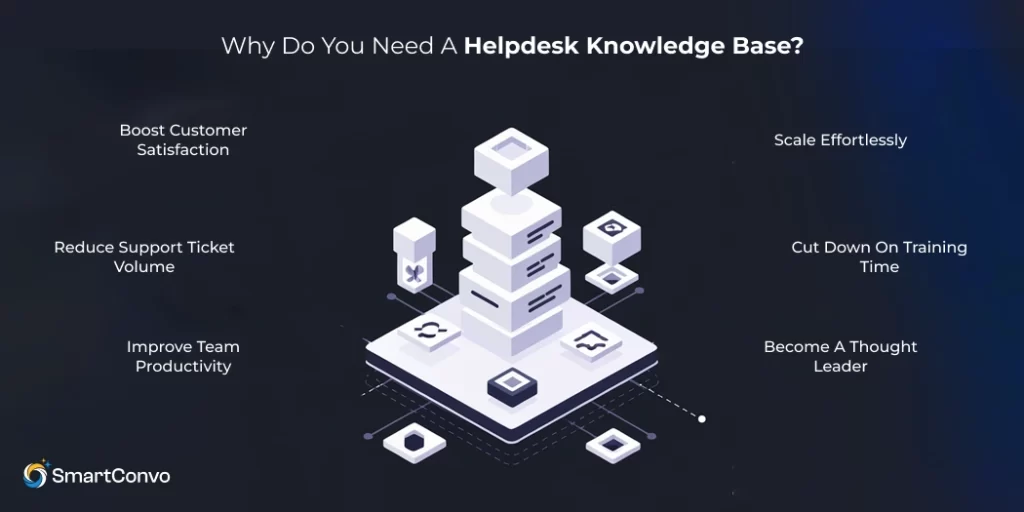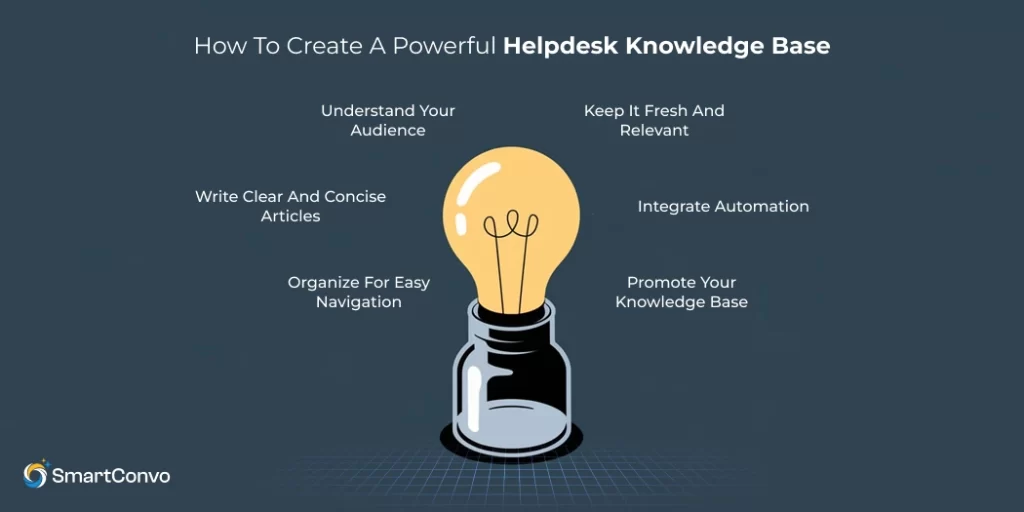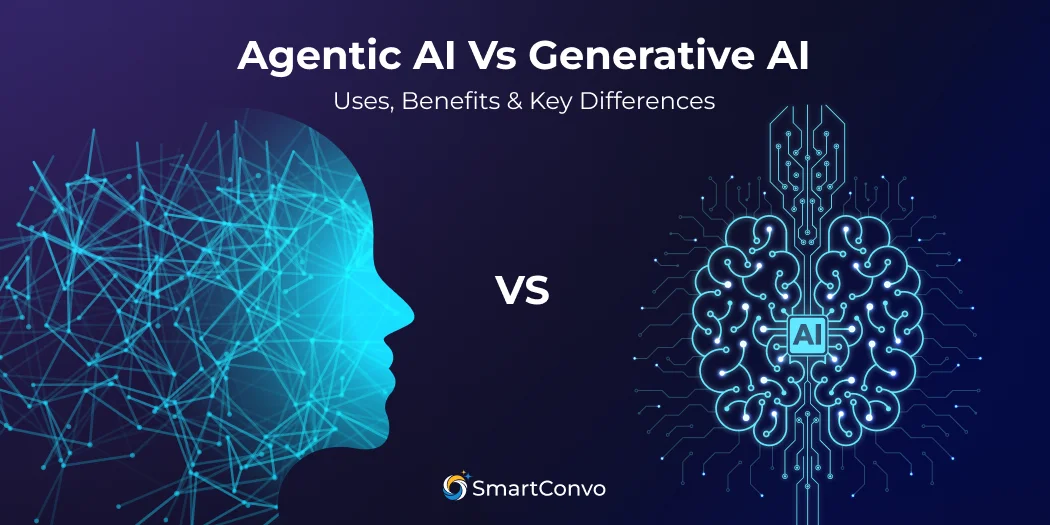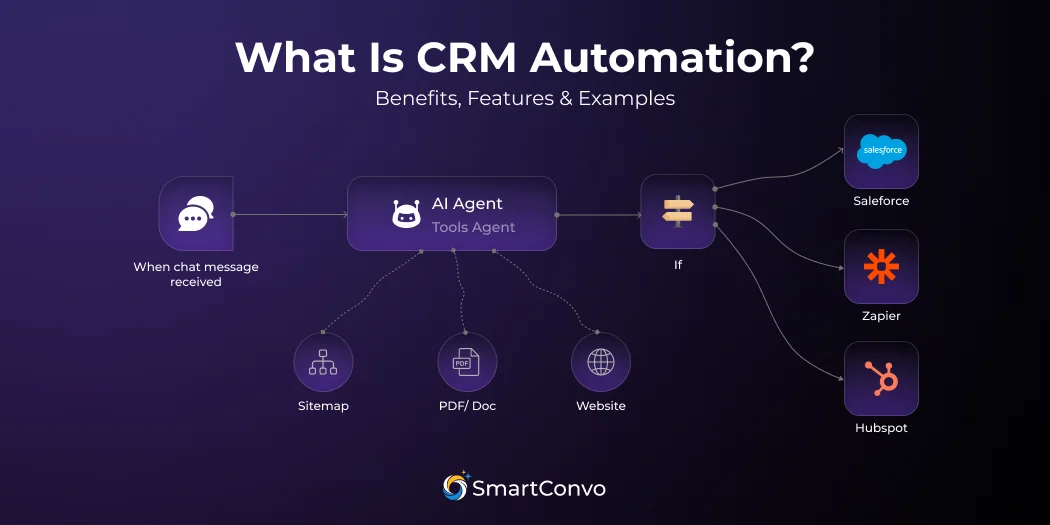Ever wondered why some businesses seem to have flawless customer support that’s available 24/7, while others struggle to keep up with the volume of inquiries? One of their secret weapons is a helpdesk knowledge base.
If your team is buried under endless support tickets or your customers are frustrated waiting for answers, it might be time to streamline your processes. A helpdesk knowledge base isn’t just a fancy repository of FAQs — it’s a strategic tool designed to enhance efficiency on all fronts, whether you’re serving customers or enabling your internal teams to thrive.
By reading this guide, you’ll understand what a helpdesk knowledge base system is, the difference between internal and external use cases, and why your business needs one. By the end, you’ll also learn actionable steps for building and optimizing one for your own organization.
What Is a Helpdesk Knowledge Base?
A helpdesk knowledge base is a centralized library of information designed to answer common questions, resolve customer issues, and support internal teams. It acts as a self-service hub where users can quickly find information without needing to wait for assistance.
Internal Knowledge Base
An internal knowledge base is built specifically for your team. It houses company policies, training materials, troubleshooting guides, and other resources employees need to work efficiently. For IT managers, this reduces roadblocks like repetitive support requests, allowing the team to focus on high-value tasks.
For example, integrating an HR Case Management Systems into your internal knowledge base ensures company policies and procedures are easily accessible. Looking at various help desk knowledge base examples can provide insights into structuring your system effectively.
External Knowledge Base
On the other hand, an external knowledge base is a customer-facing resource designed to provide users with the information they need to solve problems independently. It typically includes step-by-step guides, FAQs, troubleshooting articles, and other resources that empower customers to find answers on their own. Think of it as a virtual help desk that’s available 24/7, offering quick and reliable support without needing human intervention.
This not only improves customer satisfaction but also reduces the burden on customer support teams. Companies that offer tools like AI sales chatbots or document AI for knowledge management often pair these technologies with a robust external knowledge base to provide a seamless, self-service experience for their users. By doing so, they ensure that customers can access accurate, up-to-date information whenever they need it.
Why Do You Need a Helpdesk Knowledge Base?

A well-built helpdesk knowledge base transforms how businesses operate. Here are six compelling reasons why your organization should consider building one.
Boost Customer Satisfaction
Empowered customers are happy customers. When you provide them with the tools to resolve minor issues on their own, you not only reduce frustration but also build trust and confidence in your brand. Self-service options ensure that customers can get quick answers without waiting, enabling seamless and efficient experiences. And when your conversational AI chatbots integrate seamlessly with a well-structured knowledge base helpdesk, finding accurate information becomes even faster and easier.
Reduce Support Ticket Volume
No customer support team enjoys answering the same “How do I reset my password?” email for the 500th time—it’s repetitive, time-consuming, and takes focus away from more important tasks. By creating a well-organized knowledge base, you empower your customers to solve these common issues on their own. This not only saves time for your team but also improves the customer experience by providing instant answers.
Improve Team Productivity
For internal teams, a knowledge base eliminates the need to hunt for information buried in email chains, scattered documents, or random Slack messages. By centralizing important resources and making them easily accessible, team members can quickly find the information they need without wasting valuable time. This level of accessibility not only streamlines workflows but also enhances HR knowledge management, ensuring seamless team collaboration and more efficient decision-making.
Scale Effortlessly
Support teams often face significant challenges when scaling, such as maintaining quality service and ensuring consistent communication across a growing customer base. A well-organized knowledge base acts as a centralized hub of information, empowering teams to provide accurate, timely responses while reducing repetitive tasks. It ensures that customers receive reliable support, and staff can focus on resolving complex issues, making growth smoother and virtually headache-free.
Cut Down on Training Time
Employee onboarding becomes much smoother when new hires have access to an internal resource library specifically tailored to their roles. By providing curated content such as training manuals, process guides, and role-specific resources, employees can quickly get up to speed and feel more confident in their new positions. This not only helps them hit the ground running but also reduces the burden on managers and HR teams, creating a more efficient and seamless onboarding experience.
Become a Thought Leader
Providing a robust external knowledge base for customers positions your business as an industry authority and builds trust with your audience. By offering informative, well-structured articles, guides, and FAQs, you empower customers to find solutions independently, enhancing their overall experience. In addition, publishing articulate content aligns with SEO strategies, improving your search engine rankings and organically driving more visitors to your website.
How a Knowledge Base Reduces the Load on Support Agents

Struggling with overworked support agents? It help desk knowledge base could be the solution you need. By providing customers with instant access to helpful articles, guides, and FAQs, you can reduce the workload on your team while empowering users to find answers on their own.
Empowering Customers to Find Answers
With detailed guides and FAQs, customers can troubleshoot common problems easily and independently, without needing to contact your team for assistance. This not only reduces the workload for your support staff but also enhances the customer experience by providing quick, accessible solutions. By empowering customers to solve problems on their own.
24/7 Availability
Unlike human representatives, a knowledge base works tirelessly around the clock, providing customers with immediate access to information and solutions whenever they need it. Whether it’s late at night, during weekends, or on holidays, a knowledge base help desk ensures that customer needs are met even outside of regular business hours, delivering consistent support without delays.
Streamlined Ticket Management
Knowledge bases play a crucial role in improving ticket categorization and prioritization, ensuring that customer support requests are handled more efficiently. By addressing low-complexity queries through self-service options, such as FAQs or detailed guides, customers can often find solutions on their own without needing to contact support.
Efficient Onboarding & Training
Feeling overwhelmed by onboarding needs? Simplify the process by combining your HR chatbot for employee engagement with a robust knowledge base. Together, they can streamline workflows, provide instant answers to common questions, and personalize the learning curve for new hires, helping them adapt faster and more effectively to your organization.
Continuous Improvement
Leverage tools like generative AI to analyze which articles receive the highest traffic, identify trends in reader behavior, and gain valuable insights into what content resonates most with your audience. Use this data to adjust your content strategy accordingly, ensuring maximum impact and engagement.
Features of an Effective Help Desk Knowledge Base
Not all knowledge bases are created equal. Here’s what your help desk solution should include:
- Search Functionality: Helps users quickly and efficiently locate the relevant information they need, saving time and improving overall productivity.
- Categorization and Tags: Organizes topics into clear and logical groupings, making it easier for users to navigate and find the information they need quickly and intuitively.
- Automation Integration: Incorporate AI for business, such as LLM chatbots, to enhance customer experiences and streamline operations. These chatbots can automatically suggest relevant articles, provide instant support, and improve user engagement with personalized, data-driven recommendations.
- Multimedia Support: Use videos, infographics, and images to break down complex topics and make them easier to understand. Visual aids can simplify difficult concepts, engage your audience, and help communicate ideas more effectively, ensuring your message is clear and accessible.
How to Create a Powerful Helpdesk Knowledge Base
A great knowledge base doesn’t happen overnight, but these tips will get you there.
Understand Your Audience
Who will be using this knowledge base? Whether it’s customers looking for quick solutions, support agents needing accurate resources to assist users, or IT managers managing complex systems, understanding their specific needs and goals is the first step to creating content that truly resonates and drives meaningful engagement.
Write Clear and Concise Articles
Readers want fast, actionable advice that they can apply immediately. To keep your audience engaged, ensure your content is short, clear, and easy to digest. Use concise sentences and break up information into sections with headings to make it more readable.
Organize for Easy Navigation
Use categories, tags, and filters to create a seamless and intuitive browsing experience for users. Organizing content into clear sections makes it easier for people to find exactly what they need without wasting time. For example, an HR knowledge base might include dedicated sections for company policies, detailed job descriptions, salary FAQs, and even onboarding guides for new hires.
Keep It Fresh and Relevant
Update articles regularly to keep them accurate and relevant by reflecting software updates, introducing new procedures, or addressing changing customer expectations. This ensures your content stays useful, builds trust with your audience, and provides the most up-to-date information for users seeking guidance.
Integrate Automation
Using knowledge in AI ensures that relevant articles surface automatically to users based on their queries, saving time and enhancing efficiency. By analyzing search patterns and understanding user intent, AI-driven systems can deliver precise and personalized results, creating a seamless and intuitive experience.
Promote Your Knowledge Base
Don’t hide your knowledge base on a hard-to-find page. Make it easy for users to access by featuring it prominently on your website’s homepage, in customer support emails, or even through conversational AI chatbots that provide instant answers. A well-placed knowledge base ensures customers can quickly find the information they need, improving their overall experience and reducing the workload on your support team.
Personalizing the User Experience in a Helpdesk Knowledge Base
Want to take user engagement one step further? Personalization is key.
- Use AI-driven platforms like conversational AI in different industries to recommend relevant content tailored to the user’s query.
- Offer multilingual support to cater to global audiences.
- Encourage feedback directly within articles. This input helps refine content for the best possible experience.
No Credit Card Required | 14 days Free Trial
Build Your Chatbot
Conclusion
Investing in a helpdesk knowledge base not only unlocks seamless customer experiences but also creates significant efficiencies for your team and drives measurable improvements to your bottom line. By empowering your team with easily accessible, well-organized information, you can reduce response times, improve accuracy, and enhance customer satisfaction. Clear guides, well-structured content, and AI-powered tools such as knowledge base for HR or advanced AI chatbots take your help desk operations to the next level, ensuring they are equipped to meet the growing demands of modern businesses.
A robust knowledge base IT help desk can also serve as a valuable resource beyond customer interactions, helping internal teams streamline workflows, reduce repetitive inquiries, and foster a self-service culture among employees. Start small, focusing on the most critical information, but set ambitious goals to scale your knowledge base over time. If you’re ready to harness the potential of a helpdesk knowledgebase for your organization, the time to start is now—because the benefits will only grow as your system expands and evolves.
Frequently Asked Questions (FAQ)
A knowledge base is a self-service resource where users can find answers, while a help desk typically involves live agent support for specific queries.
No, but it reduces their workload by tackling repetitive queries, allowing them to focus on complex issues.
Review and update them quarterly to ensure accuracy and relevance.
Popular tools include Zendesk, Freshdesk, and Document360.
Use analytics to track metrics like search success rates, traffic, and time spent on articles.













